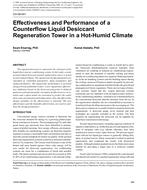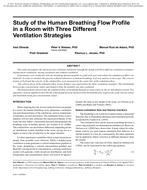The purpose of a domestic hot water (DHW) recirculation system is to decrease the time spent waiting for the water to be delivered at acceptable temperatures when called for and also decrease the subsequent water consumption. The research detailed in this paper considered whether it is necessary to continuously run these recirculation pumps, as is general practice, or whether it is possible to reduce DHW system energy consumption by operating these pumps with some type of control strategy. Three different control strategies were evaluated by employing detailed monitoring. The different operating modes were: (a) base case (continuous operation), (b) shutdown during the overnight period, (c) shutdown during the peak morning and evening periods, and (d) cycling by a return line aquastat set at 110°F (61°C). In order to accomplish the research, six sites each had an aquastat installed onto the DHW return line and a programmable timeclock wired into the pump. The analysis identifies the relative energy use for each of the strategies during four round-robin rounds of two weeks each during the spring, summer, fall, and winter periods. When compared to the base case, (pump running 24 hours per day), Strategy B saves an average of 6%, Strategy C saves 6%, and Strategy D saves 11% of the DHW portion of a building’s DHW energy requirements annually. This is significant in that for Strategy D, this translates into a savings of 4% of the building’s total annual fuel bill. All of the control strategies evaluated were simple and employed low-cost devices (under $250 installed), which should help in achieving an extremely large implementation rate for the control strategy recommended. Tenant water quality survey questionnaires show that there was always an acceptable level of satisfaction, regardless of system control strategy.
Units: Dual
Citation: Symposium, ASHRAE Transactions, vol. 105, pt. 1
Product Details
- Published:
- 1999
- Number of Pages:
- 17
- File Size:
- 1 file , 3.2 MB
- Product Code(s):
- D-7617


